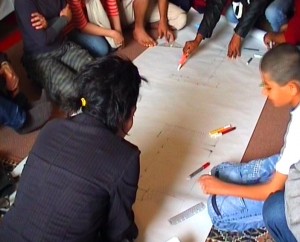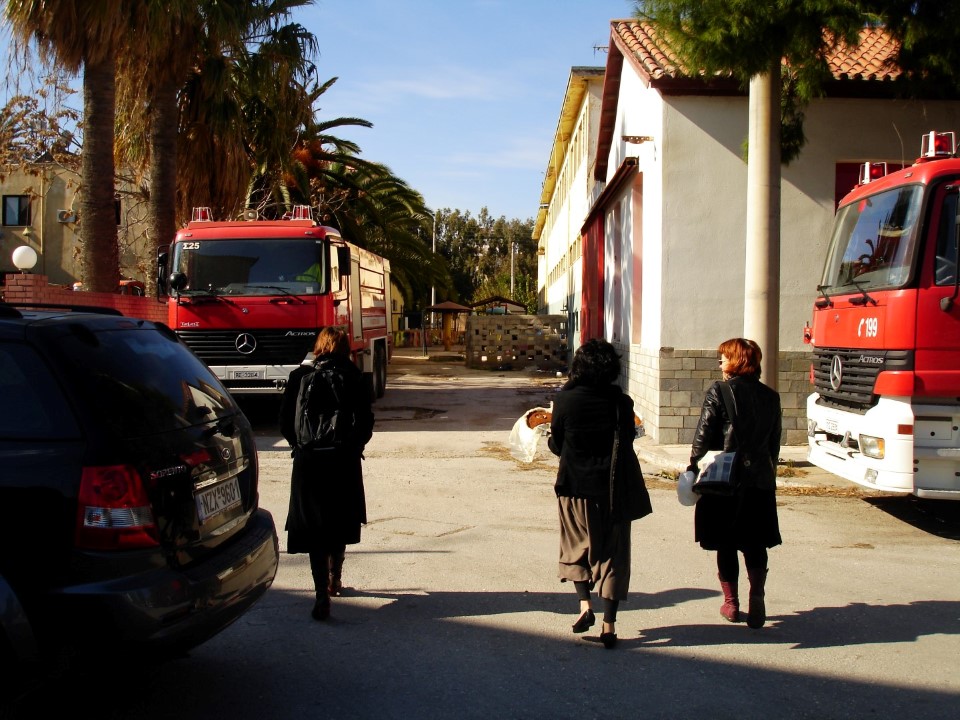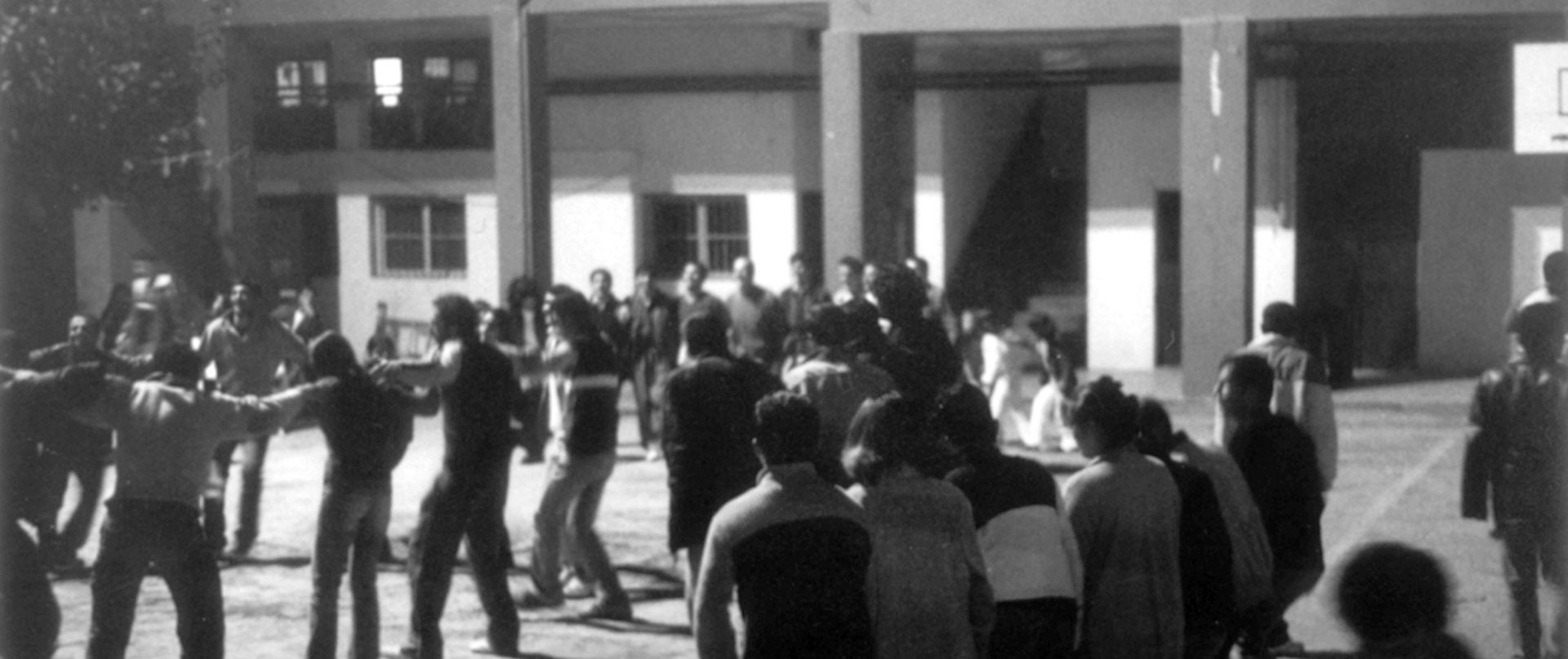Location: reception Centre of asylum seekers in Lavrio
The apolis (citiless) keep increasing in the modern metropolis as more and more people leaving their place of origin. Without papers, refugees, immigrants, unemployed, homeless, marginalized groups, live as exiles in the postmodern metropolis, in its gaps. These cut-out environments are scattered, changing and fluid, as they are produced by the city itself and its transformations. Vacant spaces in the state of the right and generally in the idea of belonging. In such spaces that function as shelters within the city, the architect’s opinion is canceled and another opinion is formed, that of the fleeting, fluid, physical habitation. During this habitation features of community life are created- and these sites create another network that extends from the heart of the city up to the distant periphery.
 The architect and the artist often get the characteristics of the Apolis as they are on the move and they are often displaced from the institutions, disputed by the social, cultural, economic landscape. The intellectual in order to explore these new spatial conditions of the metropolis, to redefine the space and place, is exiled to the locations where the citiless live. There, new identities and cohabitations are created while running away from the city and the political situation takes place in its heart. The important is that in those places new spatial, ephemeral scattered relationships are developed.
The architect and the artist often get the characteristics of the Apolis as they are on the move and they are often displaced from the institutions, disputed by the social, cultural, economic landscape. The intellectual in order to explore these new spatial conditions of the metropolis, to redefine the space and place, is exiled to the locations where the citiless live. There, new identities and cohabitations are created while running away from the city and the political situation takes place in its heart. The important is that in those places new spatial, ephemeral scattered relationships are developed.
On the occasion of this exhibition the work we create is based on wandering around and then in our temporary habitation-action in these places. We choose communities with which we get involve and act as catalysts. The Reception Centre for Asylum Seekers in Lavrio (a Panopticon building which contains spatial confinement), the bazaar which extends in the former Korean market and the surrounding streets, the autonomised occupations of the center, the area of Menandrou Street and Koumoundourou Square, various scattered immigrants’ cafes, but also spaces where the queers of the city are gathered, are some of the places which we explore with our immediate empirical action.

In these areas translation places are created. Lawlessness, immigration, dispersion, and the mutation that occurs in these specific areas-places, that often characterized by hazard, become our material for the deconstruction of the city map. The repositioning by us – from scratch – of portrayed spatial landscapes in a new psychogeographic map contains the time and space we have experienced.

Making a reference to this action and the experience gained, we would say that this is the way that the mapping of our “Apolis Athens” takes place. The guidelines, the routes and the nodal points we record become the post-level and the nervous system of the action. The map becomes a strategy for recording experience. Abstract votive sculptures inspired by ancient goddess Artemis, goddess of diversity, made to be eaten, made to become the exchange of trust between people. This object-exchange, symbol of hospitality is the reason for our transaction with people who “stagnant” for a while in the nodal points-places that we relocate on the map… in exchange for the edible votive sculpture that we offer to the members of the exiled community, they offer to us selected objects. The role of the foreigner here is ambiguous as the citiless-stranger for that time becomes the one that would accommodate us, temporarily. In the exhibition, except the map, we presented the objects-gifts as well as empty paper moulds of the edible votive sculptures. The project is in constant evolution and transformation. The artistic look, the architectural point of view, the theoretical supervision and the empirical situation come together at this point.
(For this project -actions, works and texts; presented at the Hellenic American Union collaborated Peggy Zali, Eleni Tzirtzilaki and Anna Tsouloufi-Lagiou).
The exhibition was curated by Kostas Velonis.
Apolis in the bazaar (ex-Korean market)

